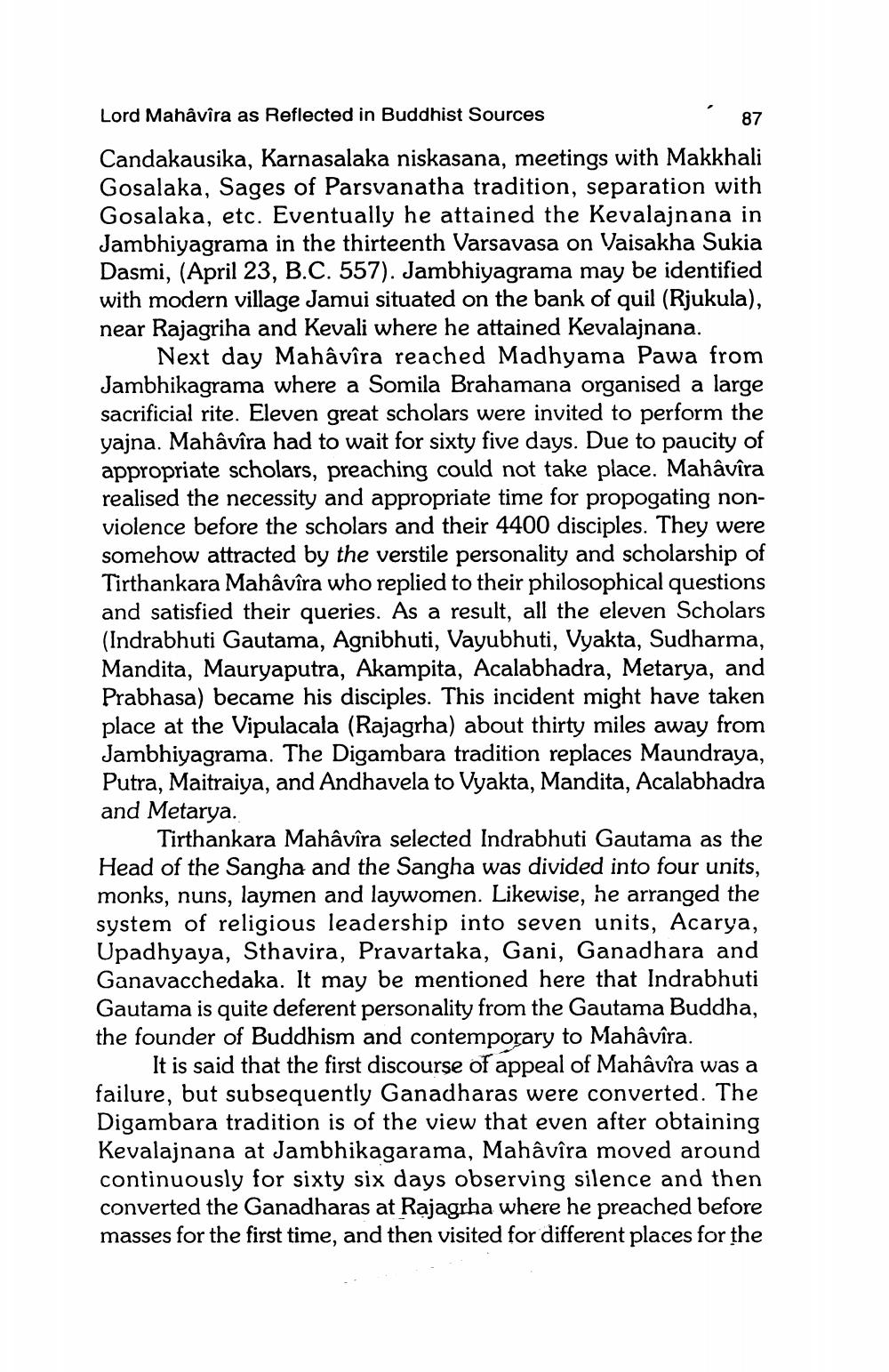________________
87
Lord Mahâvira as Reflected in Buddhist Sources Candakausika, Karnasalaka niskasana, meetings with Makkhali Gosalaka, Sages of Parsvanatha tradition, separation with Gosalaka, etc. Eventually he attained the Kevalajnana in Jambhiyagrama in the thirteenth Varsavasa on Vaisakha Sukia Dasmi, (April 23, B.C. 557). Jambhiyagrama may be identified with modern village Jamui situated on the bank of quil (Rjukula), near Rajagriha and Kevali where he attained Kevalajnana.
Next day Mahâvîra reached Madhyama Pawa from Jambhikagrama where a Somila Brahamana organised a large sacrificial rite. Eleven great scholars were invited to perform the yajna. Mahâvîra had to wait for sixty five days. Due to paucity of appropriate scholars, preaching could not take place. Mahâvîra realised the necessity and appropriate time for propogating nonviolence before the scholars and their 4400 disciples. They were somehow attracted by the verstile personality and scholarship of Tirthankara Mahâvîra who replied to their philosophical questions and satisfied their queries. As a result, all the eleven Scholars (Indrabhuti Gautama, Agnibhuti, Vayubhuti, Vyakta, Sudharma, Mandita, Mauryaputra, Akampita, Acalabhadra, Metarya, and Prabhasa) became his disciples. This incident might have taken place at the Vipulacala (Rajagrha) about thirty miles away from Jambhiyagrama. The Digambara tradition replaces Maundraya, Putra, Maitraiya, and Andhavela to Vyakta, Mandita, Acalabhadra and Metarya.
Tirthankara Mahâvîra selected Indrabhuti Gautama as the Head of the Sangha and the Sangha was divided into four units, monks, nuns, laymen and laywomen. Likewise, he arranged the system of religious leadership into seven units, Acarya, Upadhyaya, Sthavira, Pravartaka, Gani, Ganadhara and Ganavacchedaka. It may be mentioned here that Indrabhuti Gautama is quite deferent personality from the Gautama Buddha, the founder of Buddhism and contemporary to Mahâvîra.
It is said that the first discourse of appeal of Mahâvîra was a failure, but subsequently Ganadharas were converted. The Digambara tradition is of the view that even after obtaining Kevalajnana at Jambhikagarama, Mahâvîra moved around continuously for sixty six days observing silence and then converted the Ganadharas at Rajagrha where he preached before masses for the first time, and then visited for different places for the




